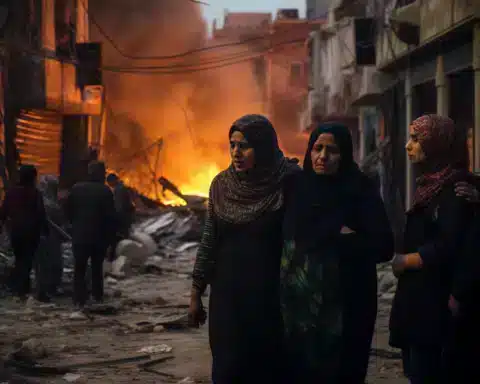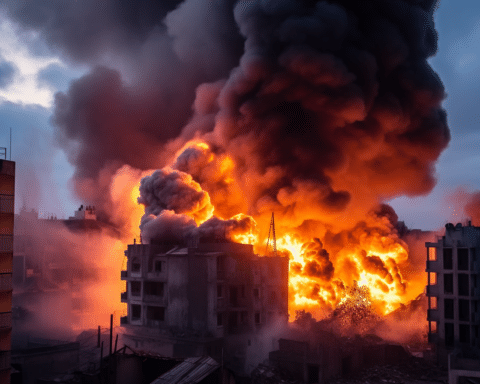Lebanon experienced its deadliest day of conflict since the 2006 Israel-Hezbollah war, with more than 270 casualties due to Israeli strikes. This surge in violence has raised fears of an all-out war as tensions between Israel and Hezbollah continue to escalate. Thousands of Lebanese fled southern regions, and the death toll has surpassed the devastating 2020 Beirut port explosion, marking a tragic day for Lebanon.
The Deadliest Day in Years
On Monday, Israeli strikes targeted southern and eastern Lebanon, killing more than 270 people in a massive barrage that mirrored the scale of destruction during the 2006 Israel-Hezbollah conflict. Lebanese Health Minister Firass Abiad confirmed the tragic toll, explaining that hospitals, medical centers, and ambulances were struck. “We are facing a humanitarian disaster,” Abiad said during a press conference. Over 1,000 people were wounded, and thousands of residents fled the south amid growing chaos.
The attack came as the Israeli military intensified its air campaign, warning civilians to evacuate areas where Hezbollah may have stored weapons. “We are expanding operations to cripple Hezbollah’s capability to launch further strikes into Israel,” said Israeli military spokesman Rear Adm. Daniel Hagari.
A Nation in Exodus
Lebanese citizens from southern towns rushed toward Beirut in what has become the most significant departure since the 2006 war. The highway leading out of Sidon was jammed with cars, echoing scenes of desperation. The government ordered schools and universities to close and began setting up shelters for those displaced. This day has marked a turning point, as many in Lebanon fear that the conflict is spiraling out of control.
The evacuation orders, which were a first since the escalation began nearly a year ago, underscored the severity of the situation. Text messages sent to residents by the Israeli military read: “If you are in a building housing weapons for Hezbollah, move away from the village until further notice.”
Hezbollah’s Response and Retaliation
In response, Hezbollah fired dozens of rockets toward Israel, including strikes targeting military bases and the Rafael defense firm in Haifa. Israeli authorities reported air-raid sirens blaring across northern Israel. Hezbollah, in a statement, vowed to continue its attacks until a ceasefire is established in Gaza, showing solidarity with Palestinian fighters. “We will stand with our brothers in Gaza,” said a Hezbollah spokesperson.
Meanwhile, in southern Lebanon, Israeli airstrikes hit several Hezbollah strongholds, including some areas far from the border. Lebanese media reported that airstrikes targeted locations across the Bekaa Valley and even as far north as Byblos, which is over 80 miles from the Israeli-Lebanese border.
Rising Fears of a Larger War
The growing intensity of airstrikes and counterstrikes has fueled concerns about the potential for an all-out war. “The situation is extremely volatile, and we are preparing for any possible escalation,” said an anonymous Israeli military official. As Hezbollah and Israel continue to exchange fire, civilians on both sides of the border are left grappling with the uncertainty of what the coming days may bring.
As Israel ramps up its air campaign and Hezbollah responds with more rocket fire, the prospect of a broader conflict looms over the region. With hundreds of lives already lost and thousands more displaced, the urgent need for diplomatic intervention grows more evident by the day. As Hezbollah vows to continue fighting, Lebanon braces itself for more destruction. The question remains whether peace can be restored before more lives are lost in this tragic conflict.




